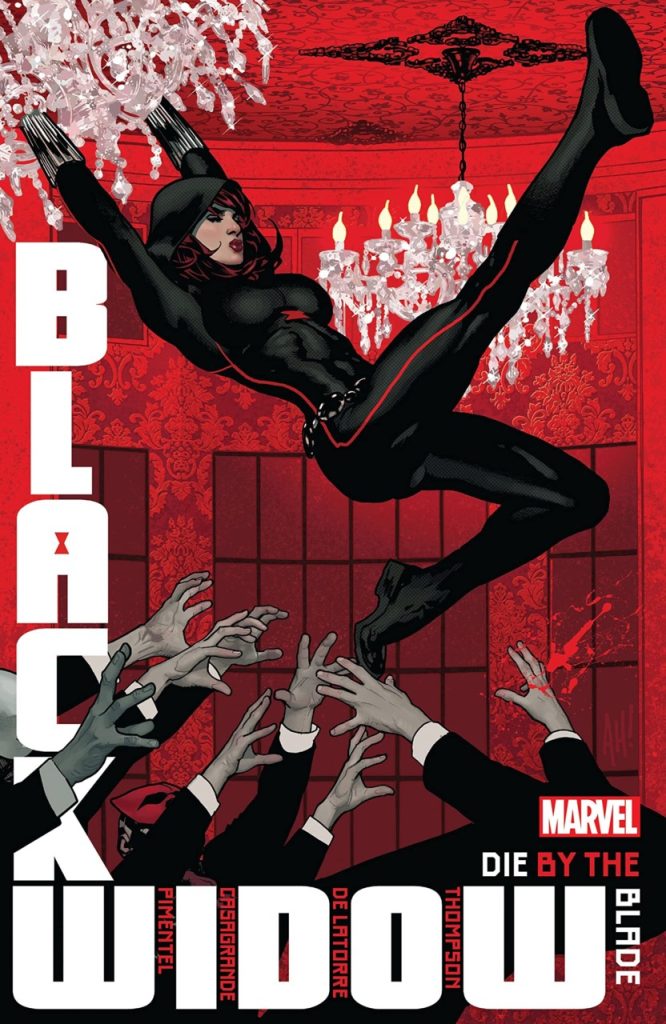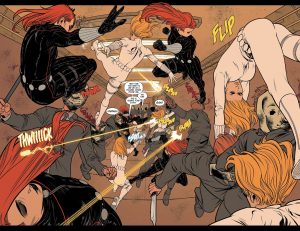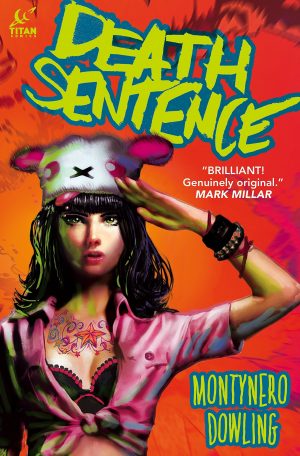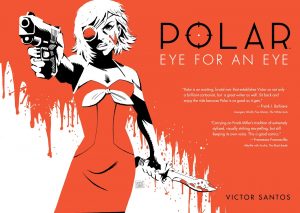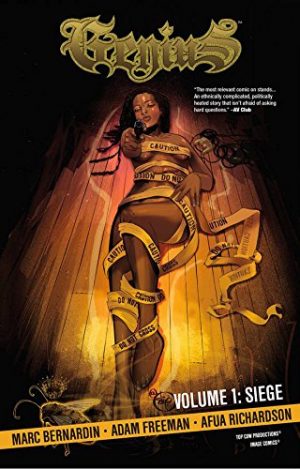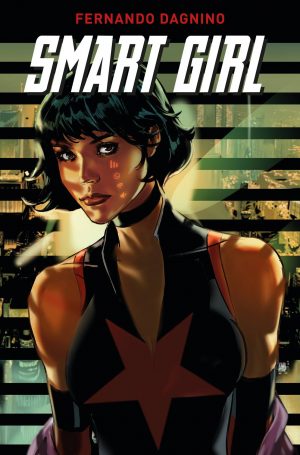Review by Karl Verhoven
While Kelly Thompson’s two previous Black Widow graphic novels have ranked among her better solo outings, what’s been lacking is credible villains. Perhaps realising this, Die by the Blade has several. A pair of twins exemplify how context is everything. It’s easy to imagine them originating in a naff 1980s issue of Marvel Team-Up, but they’re given a background and personalities, with the powers only being an adjunct, so when they run up against the Black Widow they have a presence. More time is spent establishing the Living Blade as the world’s deadliest swordsman, including a full chapter flashback, a treat for those who prefer to see Natasha in the 1980s black costume with short hair, collar and spider motif. He has the advantage of having beaten her previously, so there’s a fear at the sight of him.
As in I Am the Black Widow Thompson prefers an ensemble cast, but here the presence of an individual foe means there’s more space for Natasha, yet in what’s cleverly plotted to ensure everyone has a role. Thompson builds on what’s been introduced in the previous volumes, especially Natasha’s natural inclination for secrecy. “If it’s part of the plan wouldn’t Black Widow have told us about it?”, asks one character, getting the response “I don’t think she ever tells anyone everything”. It’s a fair summary, and Thompson returns throughout to what had earlier been lost.
Rafael T. Pimental is new to the art, yet slotting right in with a stylish flashback sequence coloured to match the location by Jordie Bellaire, who really is supremely adaptable, creating different moods at different moments. The primary artist is Elena Casagrande, and the sample spread shows her as still the star turn.
The problem with the Living Blade is inherent in his name. He’s supremely athletic, and deadly with a sword, which means dealing with him from distance, and not getting up close. The first time Natasha has no choice in the matter, nor during the flashback, but having extricated herself one might have considered greater foresight advisable on her part. That’s only a minor piece of nitpicking about what’s another fine Black Widow story. Unfortunately, though, it’s the end. Considering the quality throughout here, Marvel must really be wondering what they have to do to sell a regular Black Widow series.
Black Widow by Kelly Thompson contains all three volumes of Thompson’s run.
